Home » Wind Energy » What Are the Advantages of Wind Energy?
What Are the Advantages of Wind Energy?
Wind power is the fastest-growing source of electricity worldwide. The American Wind Energy Association estimates that more than $40 billion will be spent worldwide over the next decade to build new wind installations. The opportunities for industries that build, buy, or invest in wind energy are tremendous. Nowadays, the global environmental crisis is receiving more and more attention, and the utilization of clean energy has become a major issue in promoting sustainable development. Among the various energy sources, wind power generation system has its unique advantages. In this article, we will list a few of the major benefits that wind energy can bring.
Wind energy is cost competitive with other fuel sources
The average levelized price of wind power purchase agreements signed in 2013 was approximately 2.5 cents per kilowatt-hour, a price that is not only cost competitive with new gas-fired power plants but also compares favorably to a range of fuel cost projections of gas-fired generation extending out through 2040.1 Public and private research and development (R&D) can provide continued technological advancements and further reduce wind energy costs.
Wind energy creates jobs
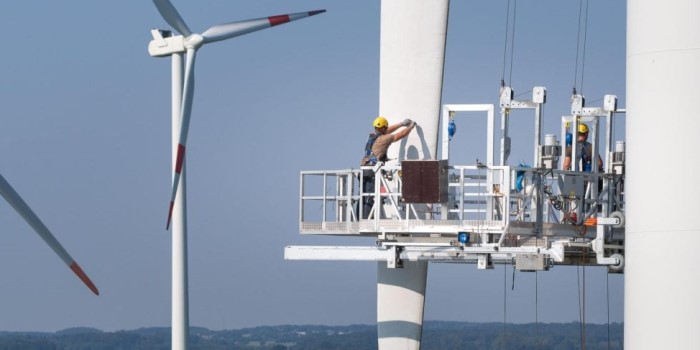
Wind energy development creates thousands of long-term, high paying jobs in fields such as wind turbine component manufacturing, construction and installation, maintenance and operations, legal and marketing services, transportation and logistical services, and more. In 2013, the wind sector invested $2 billion in the U.S. economy to build projects and employed more than 50,000 workers. Historically, employment in the wind industry’s manufacturing sector has varied depending on the status of federal incentives. In 2012, there were 25,500 jobs in the wind industry’s manufacturing sector. This number decreased to 17,400 in 2013 as a result of policy uncertainty prior to the extension of the Production Tax Credit later that year.
U.S. small wind turbine manufacturers are focusing on growing international markets. Exports from U.S.-based small wind turbine manufacturers increased 70%, from 8 megawatts in 2012 to 13.6 megawatts in 2013. U.S. small wind turbines were exported to more than 50 countries in 2013, including Italy, the United Kingdom, Germany, Greece, China, Japan, Korea, Mexico, and Nigeria.
Wind energy is an indigenous, homegrown energy source that helps to diversify the national energy portfolio
Adding wind power to the nation’s energy mix diversifies our clean energy portfolio and helps reduce America’s reliance on imported fossil fuels. With the expanded use of electric and plugin hybrid vehicles, wind energy can also reduce our dependence on imported transportation fuels. Additionally, wind energy can help stabilize the cost of electricity and reduce our vulnerability to price spikes and supply disruptions.
Wind energy is an inexhaustible renewable energy source

Wind turbines do not consume water
Most electric power plants require water to operate, but producing electricity from the wind does not require water. Researchers estimate that wind power generation in 2013 reduced power sector water consumption by 36.5 billion gallons.
Wind energy is clean
Electricity generated by wind turbines does not pollute the water we drink or the air we breathe, so wind energy means less smog, less acid rain, and fewer greenhouse gas emissions. Researchers estimate that wind energy in the United States in 2013 reduced direct power-sector carbon dioxide emissions by 115 million metric tons, equivalent to eliminating the emissions of 20 million cars during the year. An estimated 157,000 metric tons of sulfur dioxide emissions and 97,000 metric tons of nitrogen oxides were also avoided. Because it is a clean energy source, wind energy reduces health care and environmental costs associated with air pollution.
Wind energy systems have low operating costs
Wind energy systems have low operating expenses because there are no associated fuel costs. When large amounts of wind energy are added to the grid, additional generation may be required to accommodate wind energy’s variability, but leading experts in the field concluded that system operating cost increases from wind variability and uncertainty amounted to only about 10% or less of the wholesale value of the wind energy and that there are ways to reduce these costs. The absence of fuel cost also protects consumers from fluctuating coal and natural gas costs.
Wind energy can be used in a variety of applications
Wind turbines can be used in a variety of applications. Utility scale wind farms can provide electricity to an entire community while smaller turbines, often described as being used in “distributed applications,” can be installed at or near a site where the electricity will be used. Community wind projects include turbines for schools, tribes, municipal utilities, and rural electric cooperatives. Small wind turbines, alone or as part of a hybrid system, can power homes, businesses, farms, ranches, and schools. Wind energy can be perfect for remote applications such as water pumping, ice making, and telecommunications sites, and can displace diesel fuel in remote communities.
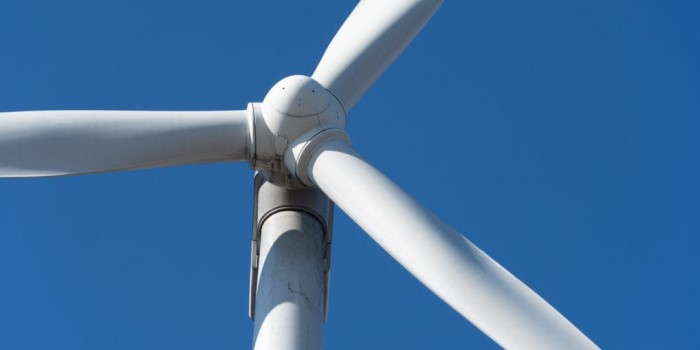
Wind energy is cost competitive with other fuel sources
The average levelized price of wind power purchase agreements signed in 2013 was approximately 2.5 cents per kilowatt-hour, a price that is not only cost competitive with new gas-fired power plants but also compares favorably to a range of fuel cost projections of gas-fired generation extending out through 2040.1 Public and private research and development (R&D) can provide continued technological advancements and further reduce wind energy costs.
Wind energy creates jobs

Wind energy development creates thousands of long-term, high paying jobs in fields such as wind turbine component manufacturing, construction and installation, maintenance and operations, legal and marketing services, transportation and logistical services, and more. In 2013, the wind sector invested $2 billion in the U.S. economy to build projects and employed more than 50,000 workers. Historically, employment in the wind industry’s manufacturing sector has varied depending on the status of federal incentives. In 2012, there were 25,500 jobs in the wind industry’s manufacturing sector. This number decreased to 17,400 in 2013 as a result of policy uncertainty prior to the extension of the Production Tax Credit later that year.
U.S. small wind turbine manufacturers are focusing on growing international markets. Exports from U.S.-based small wind turbine manufacturers increased 70%, from 8 megawatts in 2012 to 13.6 megawatts in 2013. U.S. small wind turbines were exported to more than 50 countries in 2013, including Italy, the United Kingdom, Germany, Greece, China, Japan, Korea, Mexico, and Nigeria.
Wind energy is an indigenous, homegrown energy source that helps to diversify the national energy portfolio
Adding wind power to the nation’s energy mix diversifies our clean energy portfolio and helps reduce America’s reliance on imported fossil fuels. With the expanded use of electric and plugin hybrid vehicles, wind energy can also reduce our dependence on imported transportation fuels. Additionally, wind energy can help stabilize the cost of electricity and reduce our vulnerability to price spikes and supply disruptions.
Wind energy is an inexhaustible renewable energy source
Wind energy is plentiful and readily available, and capturing its power does not deplete our natural resources. Improved technologies and taller turbines allow wind deployment in areas with lower wind speeds, such as in the southeastern United States. In addition, offshore wind has tremendous energy potential.

Wind turbines do not consume water
Most electric power plants require water to operate, but producing electricity from the wind does not require water. Researchers estimate that wind power generation in 2013 reduced power sector water consumption by 36.5 billion gallons.
Wind energy is clean
Electricity generated by wind turbines does not pollute the water we drink or the air we breathe, so wind energy means less smog, less acid rain, and fewer greenhouse gas emissions. Researchers estimate that wind energy in the United States in 2013 reduced direct power-sector carbon dioxide emissions by 115 million metric tons, equivalent to eliminating the emissions of 20 million cars during the year. An estimated 157,000 metric tons of sulfur dioxide emissions and 97,000 metric tons of nitrogen oxides were also avoided. Because it is a clean energy source, wind energy reduces health care and environmental costs associated with air pollution.
Wind energy systems have low operating costs
Wind energy systems have low operating expenses because there are no associated fuel costs. When large amounts of wind energy are added to the grid, additional generation may be required to accommodate wind energy’s variability, but leading experts in the field concluded that system operating cost increases from wind variability and uncertainty amounted to only about 10% or less of the wholesale value of the wind energy and that there are ways to reduce these costs. The absence of fuel cost also protects consumers from fluctuating coal and natural gas costs.
Wind energy can be used in a variety of applications
Wind turbines can be used in a variety of applications. Utility scale wind farms can provide electricity to an entire community while smaller turbines, often described as being used in “distributed applications,” can be installed at or near a site where the electricity will be used. Community wind projects include turbines for schools, tribes, municipal utilities, and rural electric cooperatives. Small wind turbines, alone or as part of a hybrid system, can power homes, businesses, farms, ranches, and schools. Wind energy can be perfect for remote applications such as water pumping, ice making, and telecommunications sites, and can displace diesel fuel in remote communities.

Post a Comment:
You may also like:

Featured Articles
Technical Potential for Wind Energy
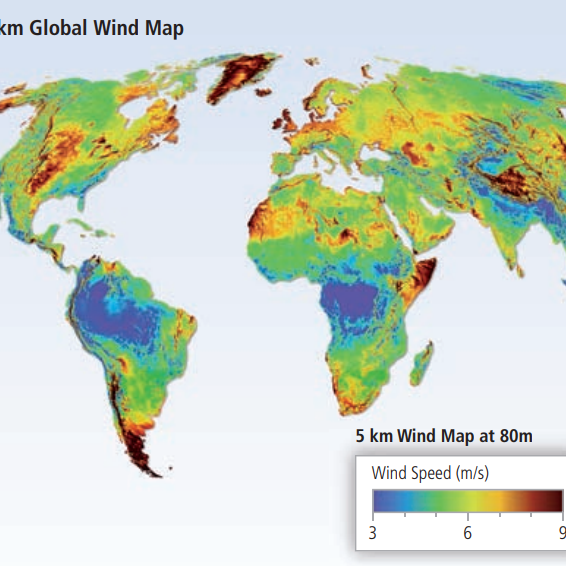 The theoretical potential for wind, as estimated by the global annual flux, has been estimated at 6,000 EJ/yr. The global ...
The theoretical potential for wind, as estimated by the global annual flux, has been estimated at 6,000 EJ/yr. The global ...
 The theoretical potential for wind, as estimated by the global annual flux, has been estimated at 6,000 EJ/yr. The global ...
The theoretical potential for wind, as estimated by the global annual flux, has been estimated at 6,000 EJ/yr. The global ...Wind Energy Background
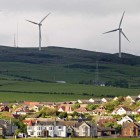 The kinetic energy in the wind is a promising source of renewable energy with significant potential in many parts of the world. ...
The kinetic energy in the wind is a promising source of renewable energy with significant potential in many parts of the world. ...
 The kinetic energy in the wind is a promising source of renewable energy with significant potential in many parts of the world. ...
The kinetic energy in the wind is a promising source of renewable energy with significant potential in many parts of the world. ...How Wind Energy is Collected and ...
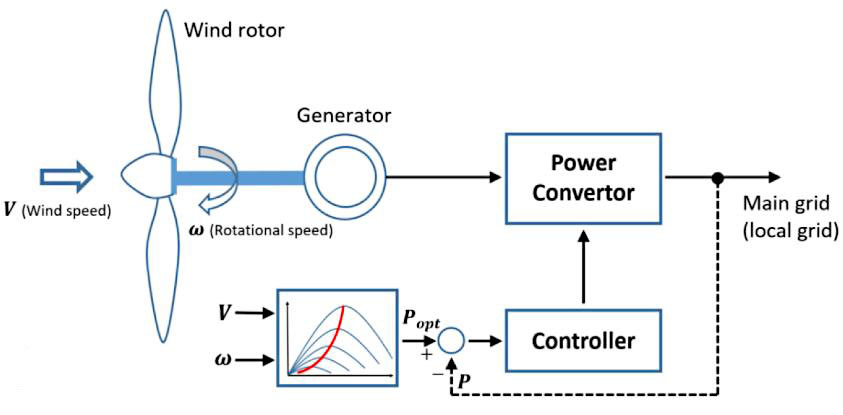 Wind energy is a form of solar energy. Earth’s atmosphere is unevenly heated by solar radiation and the air is in constant motion ...
Wind energy is a form of solar energy. Earth’s atmosphere is unevenly heated by solar radiation and the air is in constant motion ...
 Wind energy is a form of solar energy. Earth’s atmosphere is unevenly heated by solar radiation and the air is in constant motion ...
Wind energy is a form of solar energy. Earth’s atmosphere is unevenly heated by solar radiation and the air is in constant motion ...What is the Wind Energy Conversion ...
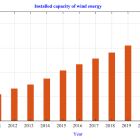 Due to technical and economic visibility, wind power has emerged as one of the most promising renewable energy sources ...
Due to technical and economic visibility, wind power has emerged as one of the most promising renewable energy sources ...
 Due to technical and economic visibility, wind power has emerged as one of the most promising renewable energy sources ...
Due to technical and economic visibility, wind power has emerged as one of the most promising renewable energy sources ...What Are the Advantages of Wind Energy?
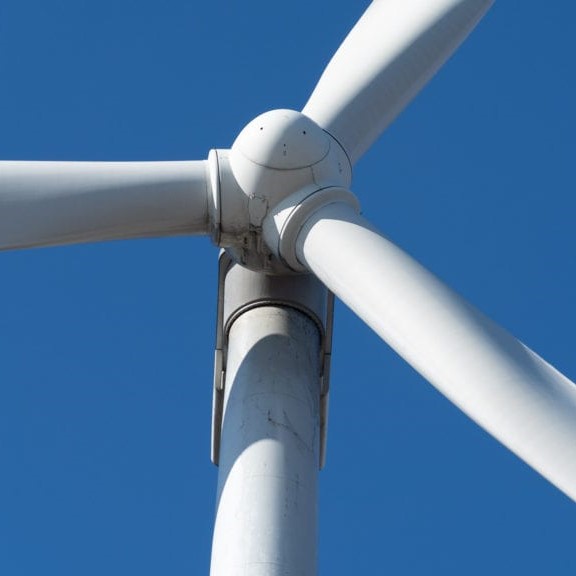 Wind power is the fastest-growing source of electricity worldwide. The American Wind Energy Association estimates that more ...
Wind power is the fastest-growing source of electricity worldwide. The American Wind Energy Association estimates that more ...
 Wind power is the fastest-growing source of electricity worldwide. The American Wind Energy Association estimates that more ...
Wind power is the fastest-growing source of electricity worldwide. The American Wind Energy Association estimates that more ...